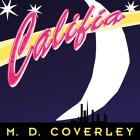|
The problem with getting inside the act
of reading, is its ubiquity - there's no escaping it, and, like
any environment that we are overly familiar with, we no longer
see it. When we read print narratives we arrive already equipped
with a full repertoire of reactions and strategies....We never
come face to face with the ground zero of reading.
J Yellowlees Douglas
 None
of the conventions we are accustomed to with books are present
in new media writing. At the outset, there may be no way to determine
how large or complex the work you are looking at is: this is where
authorial interventions such as help-files or site-maps can come
in handy. Once you begin to navigate through the text, the level
of complexity becomes clear quite quickly, but there is still
no obvious way of assessing the length of a piece. In many cases,
this is like asking ‘how long is a piece of string?’
as many hypertexts are, quite literally, what you, the reader,
make of them. Whilst a book might contain 400 numbered pages,
a website might contain 400 files (or pages) linked to each other
in multiple ways. But length quickly becomes irrelevant because
new media works often do not reach an ending or resolution in
any conventional sense. Some narratives end by taking the reader
back to the beginning; others do not end at all, but rely on the
reader to find a sense of completion through exploring all the
links via their own self-created pathways through the work. None
of the conventions we are accustomed to with books are present
in new media writing. At the outset, there may be no way to determine
how large or complex the work you are looking at is: this is where
authorial interventions such as help-files or site-maps can come
in handy. Once you begin to navigate through the text, the level
of complexity becomes clear quite quickly, but there is still
no obvious way of assessing the length of a piece. In many cases,
this is like asking ‘how long is a piece of string?’
as many hypertexts are, quite literally, what you, the reader,
make of them. Whilst a book might contain 400 numbered pages,
a website might contain 400 files (or pages) linked to each other
in multiple ways. But length quickly becomes irrelevant because
new media works often do not reach an ending or resolution in
any conventional sense. Some narratives end by taking the reader
back to the beginning; others do not end at all, but rely on the
reader to find a sense of completion through exploring all the
links via their own self-created pathways through the work.
New media writing relies on reader input to a far greater extent
than print fiction. This is not true of all works – with
some new media pieces the only ‘input’ the reader
has is the electronic equivalent of turning pages, clicking the
mouse to move forward or clicking to begin an animation. But others
offer myriad alternate routes for the reader, generally through
the device of highlighted, hyperlinked, words and/or images. Each
screen may present between one and a dozen or more opportunities,
each highlighted word or hyperlinked image taking the reader in
a different direction, adding layers to the text. Some of these
works rely on the reader navigating through the piece by choosing
words to click on, thus moving from one linked text to the next.
Others play out on the screen once the reader has entered the
text, like a kind of animated word movie. Some pieces reside on
the web and can be read by anyone who has internet access and
the appropriate downloaded plug-ins (see What
To Install). Other texts are published on CD-ROM.
The range of work available now is vast. There is non-fiction,
short fiction, novels, poetry, and works that fuse all of these
forms. There are pieces that use sound as well as moving images.
There are interactive pieces that require the reader to contribute
to the text. There are literary games, collaborative works, and
works that continue to grow after they come online. You may be
asked to contribute something of your own – a fragment of
text, a sound, a memory. You may be asked to provide your email
address so that the characters can interact with you beyond the
confines of their website. Indeed, the text you’re reading
may be written by hundreds of other people, sometimes anonymously,
sometimes named. Quite possibly there won’t be any text
at all until you have helped create it.
New media writing is often experimental and non-linear, the newness
of the technology attracting writers who are interested in the
potential fluidity and complexity of the form. Much of the work
is playful, flirting with form, content and language but beneath
the playfulness is a serious commitment to the form. Reading new
media writing is all about exploring – exploring the web
to see what’s out there, exploring the new technologies
and how to use them, exploring new ways of reading, new ways of
telling stories. Like any kind of reading, it’s about looking
for things you like, looking for writing that - whatever the interface,
however complex or simple – is a pleasure to read. Check
out the Reading List
for examples.
Readers need to find out that "what
counts is no longer the 'result' or content of the reading, but
rather the process of reading in itself.
Elizabeth Kalstrup
|

